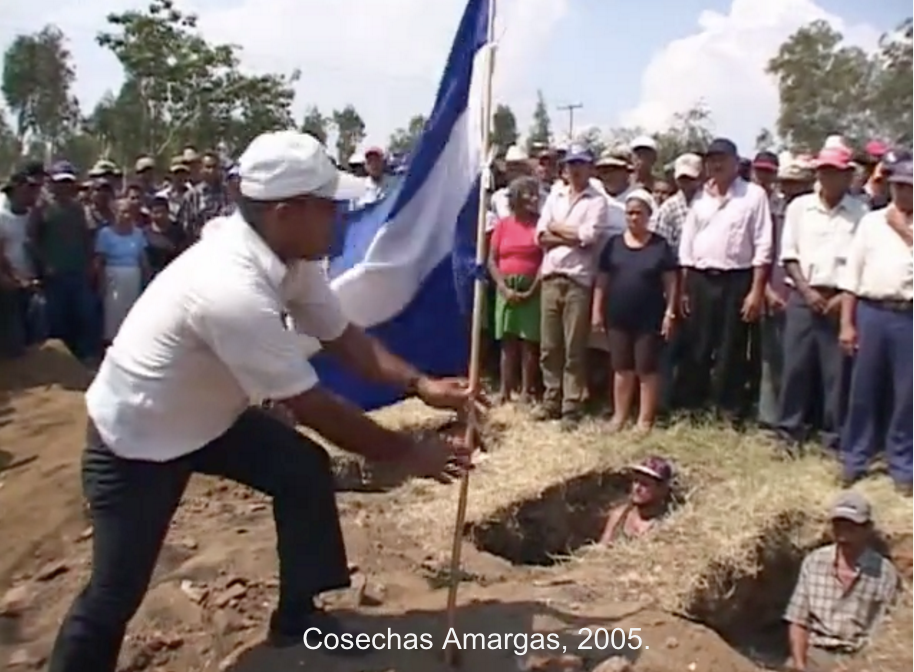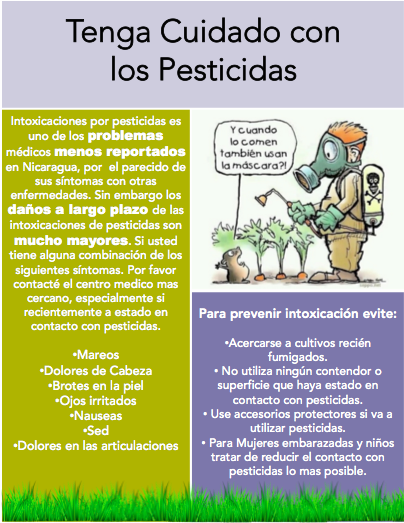Pesticide Use in Nicaragua
Introduction
- 40% of Nicaragua’s population is affiliated with agricultural industries
- 22% of agricultural exports have been treated with highly hazardous pesticides
- DBCP and Parathion can still be found in Nicaragua, even though they are banned in the US
- pesticide poisoning is especially underreported in Nicaragua
- rural families are at more of a risk because they live closer in proximity to fields treated with pesticides
- Nicaragua’s use of pesticides is one of the highest globally per capita
Who is affected?
- those who work in fields and are exposed to large quantities of pesticides
- local people who ingest crops that are coated in pesticides
- additionally, those near farms that use harmful pesticides are affected due to the detrimental effects on the environment (ie. water and soil contamination)
Who are the major perpetrators?
- Agricultural exports have comprised a large portion of the Nicaraguan economy -coffee, cotton, bananas, and cacao
- DBCP used in Nicaragua, even though it has been banned in the US
- Corporations have pressured communities to use pesticides for all their crops -lawsuits in the 1970s proved the hazardous nature of pesticides
- pesticides used are still expensive
Risk factors found by research
- Lack of access to personal protective equipment
- Lack of training in pesticide use,
- Mixing pesticides
- Leakages while using a backpack sprayer
- Entering recently sprayed fields
- storing pesticides at home,
- Cleaning the pump nozzle by mouth.
Impacts of pesticide us
- Health hazard
- Environmental threat to natural ecosystem
- Impaired locomotion and balance.
- Impaired cognitive development.
- Congenital and developmental diseases.
- Cancer
- Loss of voluntary movement
- Chronic Kidney disease.
- In the worst case death is a result.
Response of the Public.
Thousands of people marched on the capital to protest against the indifference of the government to their situation and asking for compensation.
Remedies
Long Term:
- find alternatives to pesticides and invest in natural pesticides
- invest in land for the purpose of small-scale, subsistence agricultural efforts
Short Term:
- effectively wash crops that could be contaminated with hazardous pesticides
- buy foods that are from smaller farms that do not need to use pesticides to guarantee large crop yields
- avoid handling pesticides and foods grown with pesticides
Potential Preventative Flyer
Final Project Presentation.
Click [Here].





